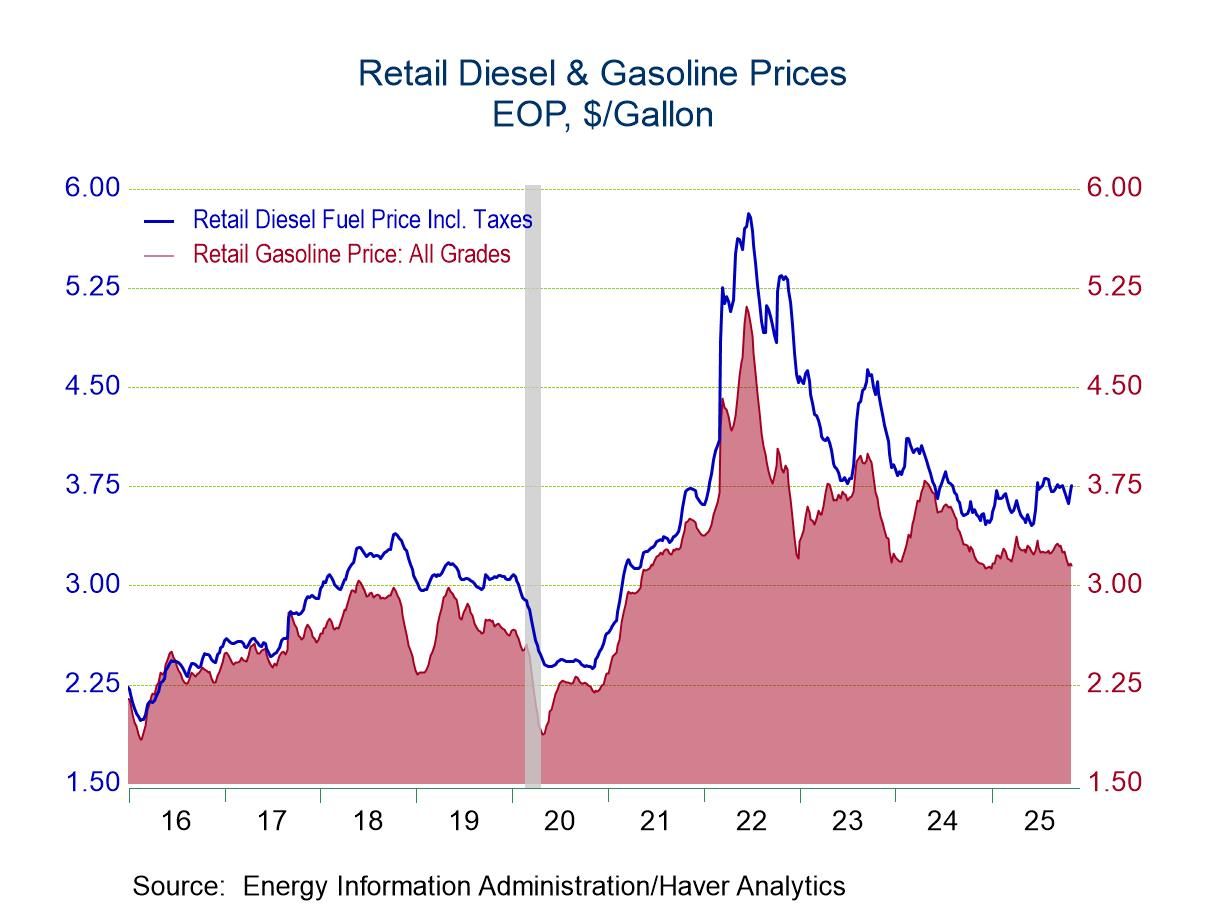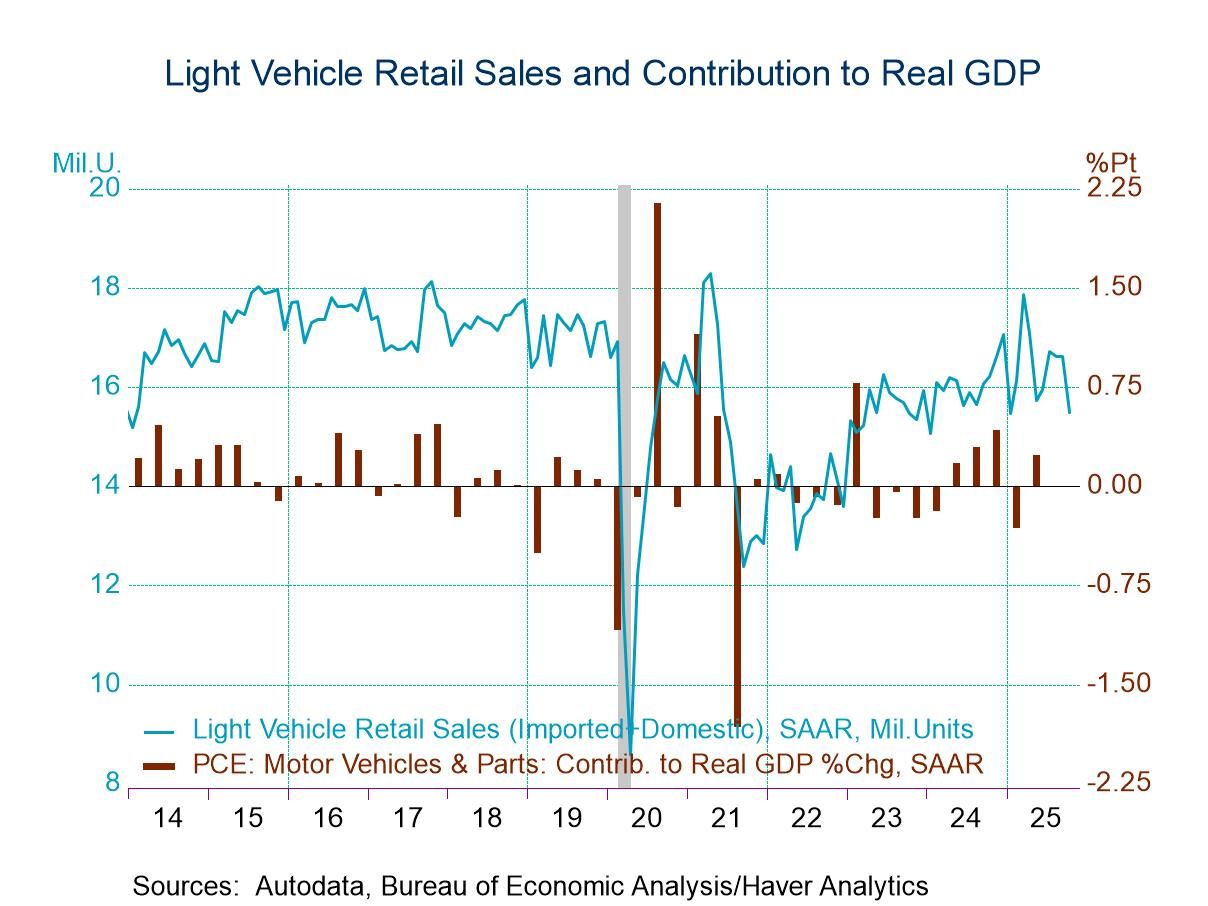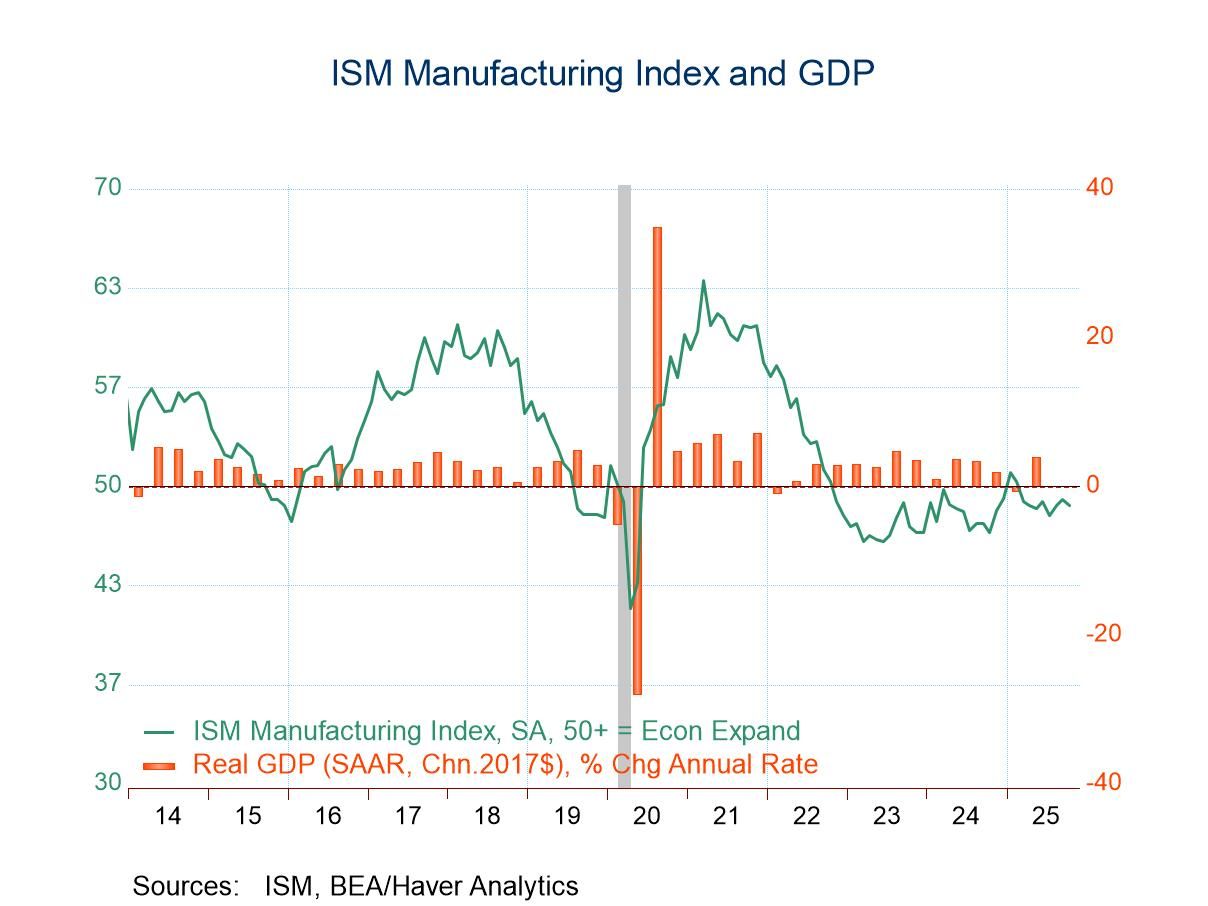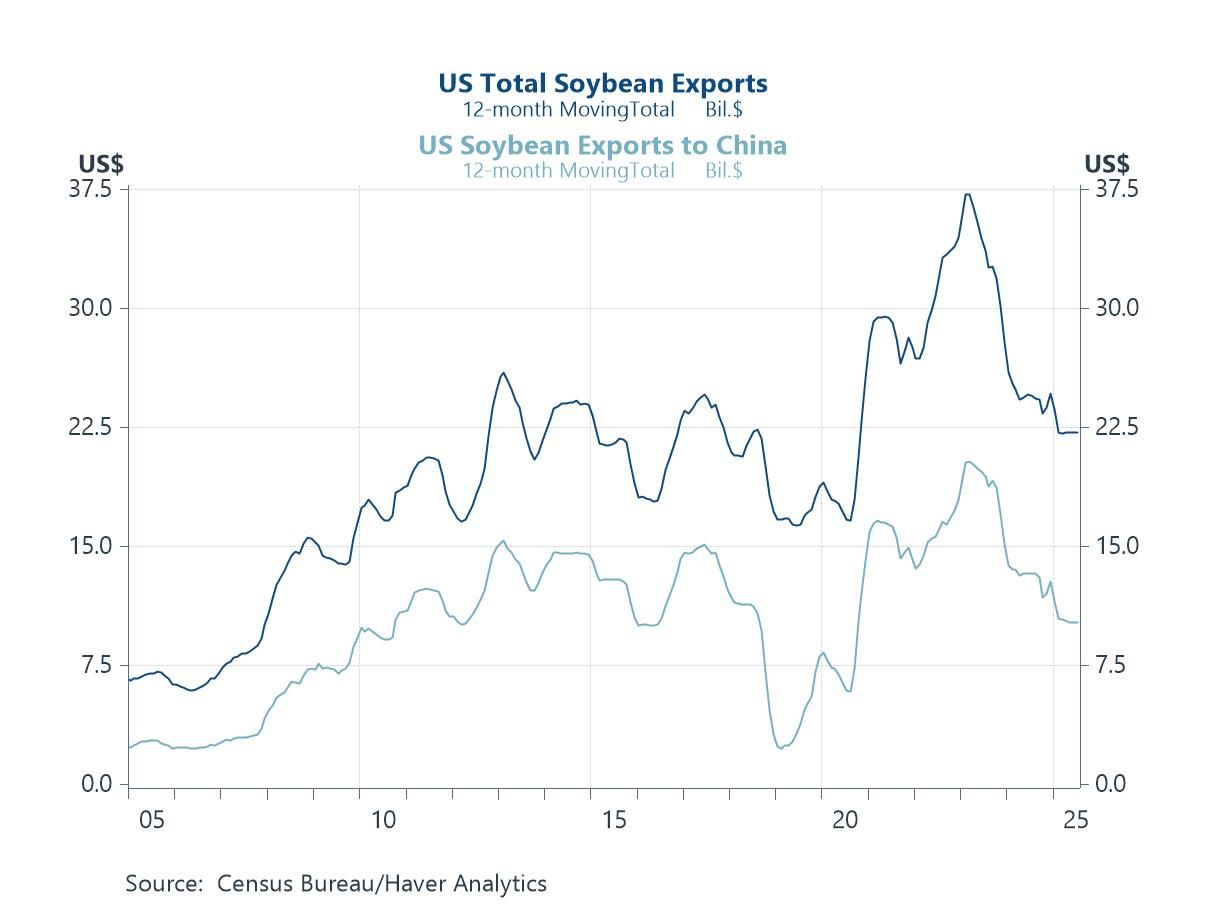U.S. Business Inventories Unchanged in April as Sales Slipped
by:Sandy Batten
|in:Economy in Brief
Summary
- Total inventories were unchanged in April from March.
- Wholesale inventories rose for the fourth consecutive month while retail and factory inventories slipped.
- Sales edged down 0.1% m/m, the first monthly decline in three months, with declines in both factory and retail sales.
- With little change in both sales and inventories, the inventories/sales ratio was unchanged in April following two consecutive monthly declines.


Total business inventories were unchanged in April from March (+2.2% y/y) after having inched up 0.1% m/m in March. The Action Economics Forecast Survey had anticipated an unchanged reading. Manufacturing inventories edged down 0.1% m/m (+0.9% y/y) following five consecutive monthly gains. Retail inventories were essentially unchanged (-0.03% m/m) after having declined in three of the four previous months. In contrast, wholesale inventories rose 0.2% m/m (2.3% y/y) in April for their fourth consecutive monthly gain.
Drilling down into retail inventories, auto inventories declined 0.8% m/m in April for their sixth consecutive monthly fall. Retail inventories excluding autos increased 0.3% m/m for their fourth consecutive monthly gain. General merchandise store inventories fell 0.3% m/m, their second decline in the past three months. Inventories increased in all other major retail categories, led by a 1.0% m/m increase in food and beverage store inventories. Inventories at building materials and garden equipment stores rose 0.8% m/m following two consecutive monthly declines. Furniture store inventories increased 0.4% m/m, their third monthly increase in the past four months.
Total business sales slipped 0.1% m/m (+3.8% y/y) in April, their first monthly decline in three months. Wholesale sales edged up 0.1% (6.0% y/y), their third consecutive monthly rise. Factory sales fell 0.3% m/m (+0.6% y/y) on top of a 0.2% monthly decline in March. Retail sales decreased 0.2% m/m (+4.7% y/y) in April though in a separate report also released today, retail sales slumped 0.9% m/m in May, led by declines in auto and gasoline sales.
With the little change in both sales and inventories in April, the inventory/sales (I/S) ratio was unchanged after having fallen in four of the five previous months. The 1.38 reading in April tied the reading in the previous month as the lowest one since September 2023. The I/S ratios for retailers and wholesalers were also unchanged in April from March while the manufacturing I/S ratio increased 0.6% m/m.
The manufacturing and trade data are in Haver’s USECON database. The Action Economics Forecast Survey is in the AS1REPNA database.


Sandy Batten
AuthorMore in Author Profile »Sandy Batten has more than 30 years of experience analyzing industrial economies and financial markets and a wide range of experience across the financial services sector, government, and academia. Before joining Haver Analytics, Sandy was a Vice President and Senior Economist at Citibank; Senior Credit Market Analyst at CDC Investment Management, Managing Director at Bear Stearns, and Executive Director at JPMorgan. In 2008, Sandy was named the most accurate US forecaster by the National Association for Business Economics. He is a member of the New York Forecasters Club, NABE, and the American Economic Association. Prior to his time in the financial services sector, Sandy was a Research Officer at the Federal Reserve Bank of St. Louis, Senior Staff Economist on the President’s Council of Economic Advisors, Deputy Assistant Secretary for Economic Policy at the US Treasury, and Economist at the International Monetary Fund. Sandy has taught economics at St. Louis University, Denison University, and Muskingun College. He has published numerous peer-reviewed articles in a wide range of academic publications. He has a B.A. in economics from the University of Richmond and a M.A. and Ph.D. in economics from The Ohio State University.







 Asia
Asia